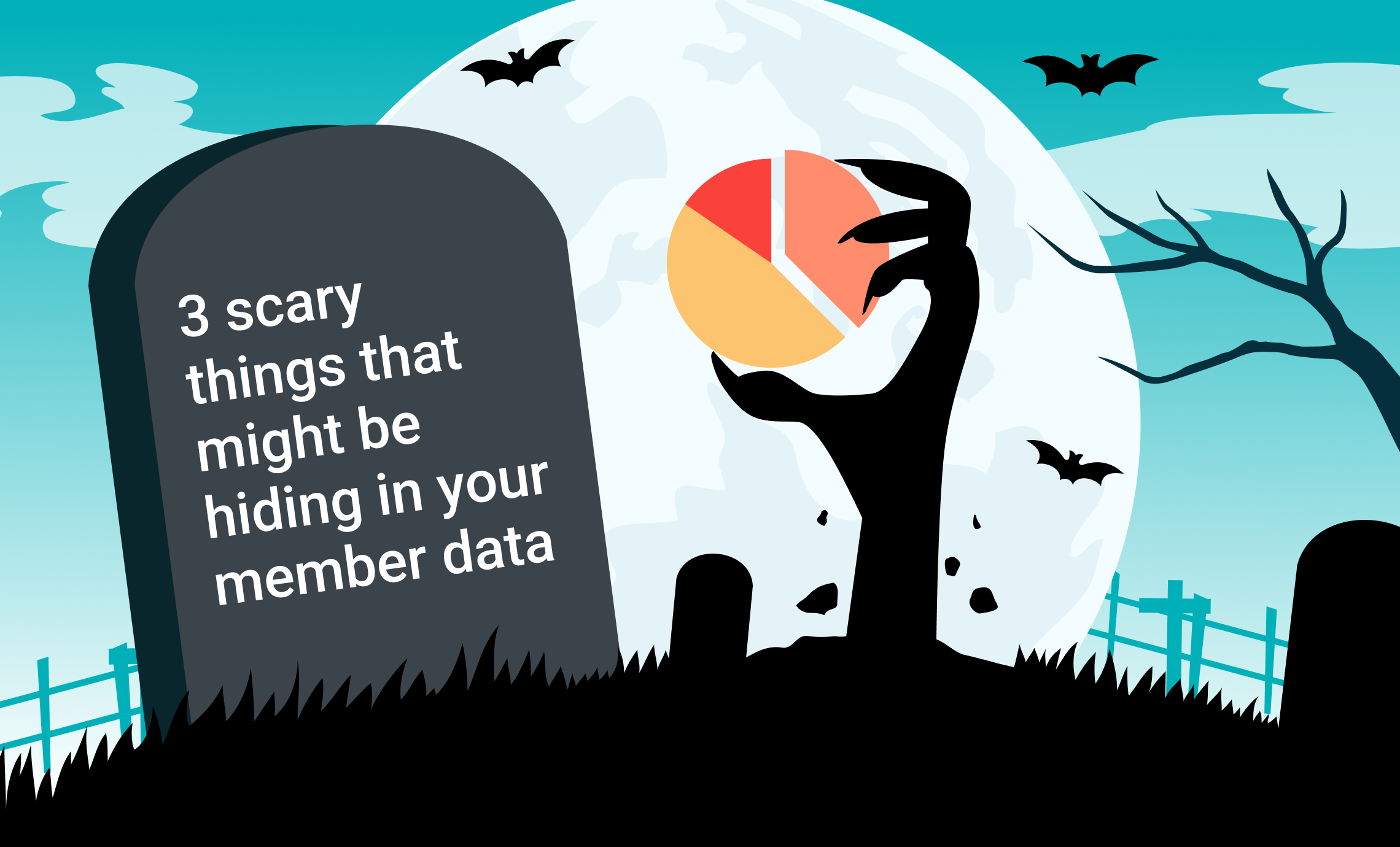Love it or hate it, dating—more specifically online dating—is always a weird experience because it’s the only solid way to meet someone these days. This is something I had to dive right into when I moved to a new city because I didn’t know a single person. And guess what, it wasn’t just dating with the hopes of meeting a significant other, I also went on friend dates. Yes, friend dates are normal thing people do. To my surprise, I discovered some apps that help you do just that. I decided to give it a try because I use dating apps, so how awkward can it be to make platonic friendships through the same way. Can’t be that different, right?
Well, it made me realize how dating, be it typical dating or friend dating, has some parallels to searching for new membership software. Here are 5 ways the membership software search is exactly like navigating the weird world of dating.
It’s possible. Implementation can be done on time and without disaster when you follow best practices and know what to expect. Learn the ins and outs in The Ultimate Guide to Implementing Membership Software.
1. You have to know what you want.
When looking for that “perfect” software match, you have to go in knowing what you want and setting some clear expectations. There’s nothing wrong with knowing what you need in a software system—just as it’s perfectly acceptable to have a checklist of what you are looking for in a significant other (SO).
In the case of searching for a new membership management system, the same idea applies. Obviously, with a software search, you’re going to be looking at the system capabilities, how the software vendor communicates with you and your team, and most importantly, the cost of the system. You’ll have to know what matters to your team and organization and what are merely “wants.” Does this sound like dating to you? It’s pretty similar, isn’t it? You want to find a software that fits your organization’s needs AND budget! This can be accomplished by performing a needs assessment. A needs assessment can help you determine what’s missing in your existing system that your next system should have.
And once you’ve completed your needs assessment, you can then focus on creating a requirements list. When defining your requirements, you need to be as specific as possible. This will help the software vendor to better understand what you’re looking for in a membership management system and how they can help you identify ways to bring down the costs. And be clear as to what you define as needs and wants. By bundling your “wants” into your requirements list, you can find yourself focusing on too many features and possibly losing sight of why you need a new software in the first place. Including your “wants” can also quickly drive up the overall cost of a new system, which could potentially create some conflict with your executive board who approved this purchase.
Knowing what you need is also essential in dating. There is a large assortment of dating apps available for all types of people and interests. I made mistake of joining too many apps at once, and I had a hard time juggling them all simultaneously. It quickly became overwhelming. Don’t cast your net out so wide that you lose sight of what matters most to you.
2. Do plenty of research.

I think a similar mindset should be taken when searching for a new membership management system. Ask yourself and your team why is the switch necessary? What options are available for your organization’s size and budget? Look at customer testimonials on software sites. Scope out the software providers’ sites and check out their case studies to see how they’ve helped other organizations solve their pain points. Need to talk to a vendor selection consultant (VSC)? That’s a great idea too! It doesn’t hurt to talk to a third party who can hopefully offer you an unbiased opinion. VSCs can help you determine what you need in a new membership software and can point you in the right direction.
There are a vast number of resources available to you as you search for new software, so why not take full advantage of it? When you arm yourself with all the information you need to present the business case to your board, they’ll be impressed that you took the time to do your research and you’re presenting them with the best and most cost-efficient solutions that make sense for your organization.
Here are a few other things to consider:
Does it make sense to simply upgrade or is the switch to new software necessary in order for your organization’s staff to do their jobs more effectively?
Is the software system that you’re looking at customized or does the platform allow you and your team to make configurations on their own?
What are the different ways you can potentially bring costs down? If you opt to cut costs, don’t do it at the sacrifice of making your implementation run on time or cutting out staff training.
3. There will be obstacles you have to overcome.

Another challenge you can expect to face within your organization is the reluctance to switch systems because of the changes associated with it. There’s the stress of having to learn an entirely new system, which can be intimidating if the right amount of training isn’t provided.
While you’re compiling your list of requirements, you might discover that your organization had outdated internal processes or none to even begin with. Having a lack of standard operating procedures (SOP) will make the software implementation more difficult for all the parties involved.
Then there’s also the possibility that as you’re reaching out to various software vendors, you might be communicating with a vendor who may not share the same values as you, or the vendor may feel as if they aren’t the best one to fit your needs. It’s like going on a first date. Sometimes you’re going to instantly click with someone and other times you just know it’s never going to go anywhere—whatever the reason might be. You want to work with a vendor that is the right match, helps you use your new software to its full potential, and can support you throughout the implementation process and well beyond it. However, it’s also good to keep in mind that if a vendor decides not to pursue the relationship, try to remember that chances are they recognized it’s not the right fit for you, and it’s better you’re aware of that early on.
When you’re dating someone, you can always expect to have to overcome some obstacles. Of course, it’s going to vary with every relationship. An obstacle might be having to do long-distance—that can be incredibly taxing on a relationship. Then, there are smaller hurdles such as one person prefers to always have the AC on, whereas you like it off. A more serious hurdle could be having different approaches to communication (or not) when you get into an argument. Whatever obstacles you encounter, it’s going to have to be addressed unless you want the relationship to fall apart, or you don’t care enough to sustain it for the long-haul.
4. You’ll have to address your flaws.
Let’s assume you’ve received board approval for making the purchase, then you’re going to take to look more closely at your system requirements. When you’re mapping this out, you’re going to discover that many of your existing processes are obsolete, or worse, you realize you never had any to begin with. That can be a time-consuming project for those who will be involved during the software implementation. It’s better to have something in place and save yourself the trouble in the long-run.
Having some sort of playbook for internal processes will also benefit the software vendor you work with. Their consulting team will know what they need to build during the implementation and it will reduce the constant questions that would have to be asked if they didn’t have anything to work off.
When you’re dating, you and your SO will discover flaws about each other that you may not have been aware of. It can be something as insignificant albeit annoying as one person leaving dirty dishes in the sink or not making the bed, or something much more serious such as lying. Coming to terms with your own flaws can be a little scary because you’re forced to acknowledge this version of yourself you might have chosen to ignore. And you have to ask yourself if it’s something that will truly affect the relationship. Of course, it’s good to distinguish between what are flaws and what are simply quirks! That’s going to vary with every person though.
5. It’s a two-way effort.

There are several key ingredients that make a partnership with your vendor sustainable. One of the most important ingredients is trust. You have to trust that the vendor has your organization’s best interests in mind. You have to believe that they know what they are doing and are following industry best practices. And the vendor has an obligation to be honest about the product capabilities, any deliverables, and status of the software implementation just to name a few.
As mentioned earlier, it never hurts to do some research though. Talk to other clients who are of a similar size as your organization to get a better understanding of how their implementation went. Also, don’t be afraid to ask your vendor questions. If the vendor is unwilling to answer questions, then that’s a red flag.
Exploring new membership software options is not something you can decide on overnight and it’s not as easy as swiping left or right on a person via an app. Take the time to do your research because purchasing new software is a long-term commitment with your vendor and the software itself so you want to find something that is the right fit for your organization.
It’s possible. Implementation can be done on time and without disaster when you follow best practices and know what to expect. Learn the ins and outs in The Ultimate Guide to Implementing Member Software.


